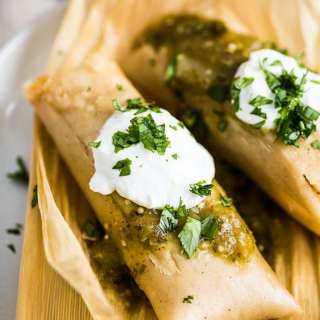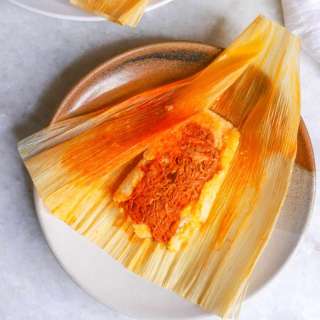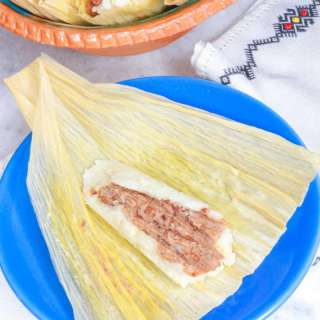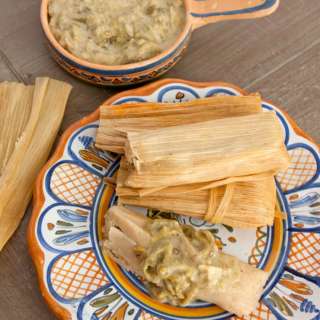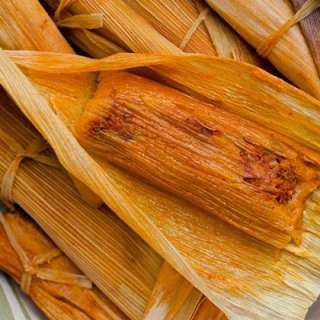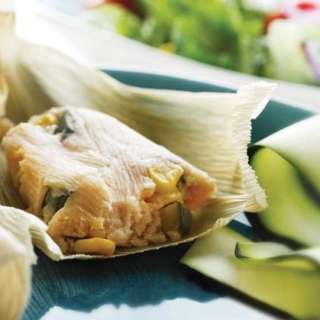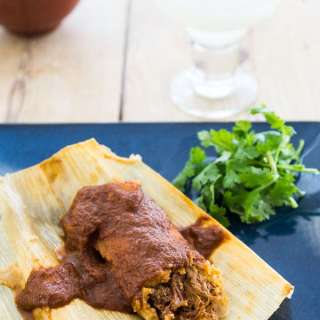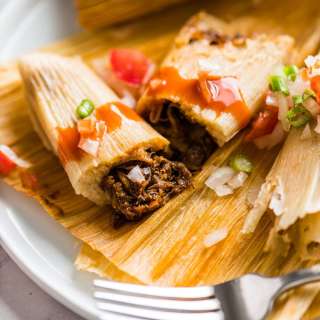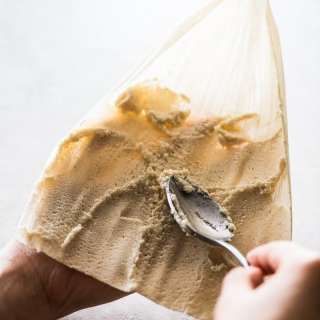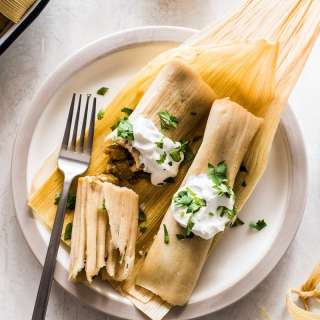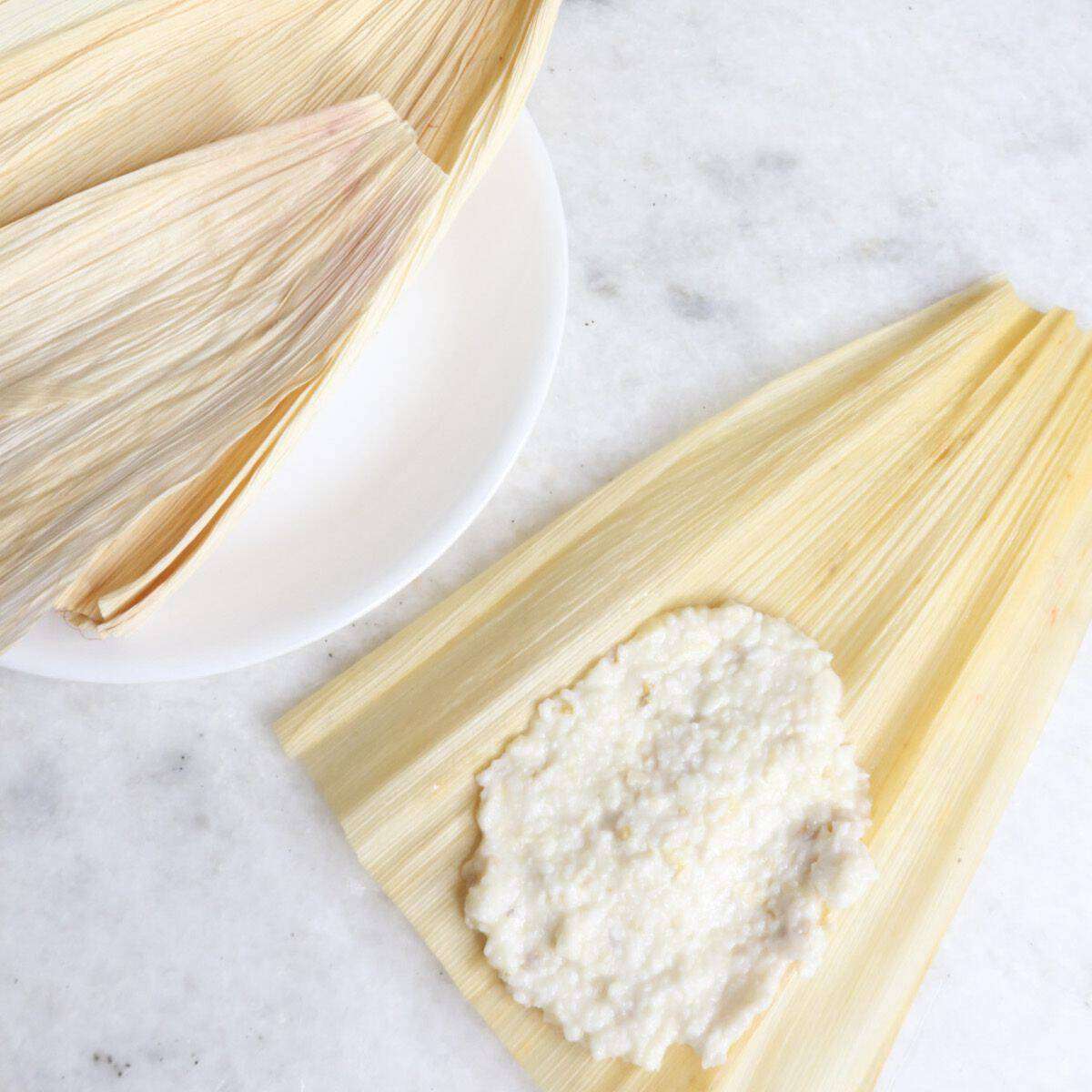
How to Nixtamalize Corn for Tamales
User Reviews
5.0
6 reviews
Excellent
-
Prep Time
45 mins
-
Cook Time
2 hrs 45 mins
-
Additional Time
8 hrs
-
Total Time
11 hrs 15 mins
-
Servings
4 pounds
-
Course
Main Course
-
Cuisine
Mexican

How to Nixtamalize Corn for Tamales
Report
Learn how to nixtamalize corn for tamales, the age-old process that results in the most incredible masa from scratch. This authentic tradition is the secret to tamales with unrivaled texture and flavor! In this post, I walk you through all the steps so you can master this process at home.
Share:
Ingredients
- 1190 grams dried white whole-kernel corn (or olotillo corn) about 2 pounds 10 ounces
- 2 teaspoon calcium hydroxide also known as hydrated lime, pickling lime, or cal
- water
- ½ kilogram shortening or lard about 1.1 pounds
- 4 teaspoons kosher salt, plus more if needed
- 4 teaspoons baking powder
- 6-10 cups warm broth use the broth from the meat being used as a filling, or vegetable broth or chicken broth
Instructions
Nixtamalize Corn
- Add corn to a large pot. Fill pot with water, with a ratio of 4 parts water to 1 part corn.
- Sprinkle in the cal and mix thoroughly with the water.
- Bring to a boil and simmer uncovered for about 2 hours.
- At the 2 hour mark, begin checking to see if the skins of the corn easily rub off between your fingers and if the corn is al dente (medium-soft) when you bite into it. If not, continue to cook for another 15-30 minutes.
- Remove the pot from the heat and submerge it in an ice bath. Let the corn sit in the pot for 8-12 hours to allow the corn to steep in the cal solution.
- Using a colander, drain the corn and rinse under cold water. While rinsing, rub the corn pieces between your hands so that a majority of the outer skins fall off.
- Use either a hand-cranked grain mill or an electric corn mill (or molino) to grind the corn in batches, until no big pieces of corn are left. The final texture should be coarse, as opposed to fine.
Making the Masa for Tamales
- Place shortening in an extra-large mixing bowl. With clean hands, knead continuously for about 15-20 minutes until the shortening is soft, light, and creamy-smooth.
- Add salt and baking powder to the ground corn (masa) and mix to incorporate well.
- Slowly add the masa to the shortening and mix with your hands until well combined.
- Add warm broth a cup at a time to the mixture. Knead the broth into the masa and continue to add a cup of broth at a time until a spreadable consistency is reached. The masa should be smooth, not too wet and not too dry, like a thick cake batter.
- Taste a little bit of the masa. It should taste like salt without being overly salty. If not, dissolve two to three teaspoons in a tablespoon of warm broth and mix into the masa. Taste again and repeat if needed.
- Prepared masa will spoil rather quickly. If you are not making the tamales right away, be sure to refrigerate the masa in an air-tight container for up to 2 days or freeze for up to 6 months.
Equipments used:
Notes
- Age of the corn and elevation can affect cooking time, therefore it is important to test the corn often to make sure it doesn't overcook. 1190 grams of dried corn will yield approximately 2 kilograms (4.4 pounds) of masa, which makes about 70 tamales. You can easily half the recipe for 35 tamales. Use 595 grams of dried corn, 1 teaspoon of cal, ¼ kilogram of shortening, 2 teaspoons of salt and 2 teaspoons of baking powder, and as much broth as needed for the correct consistency.
- Age of the corn and elevation can affect cooking time, therefore it is important to test the corn often to make sure it doesn't overcook.
- 1190 grams of dried corn will yield approximately 2 kilograms (4.4 pounds) of masa, which makes about 70 tamales.
- You can easily half the recipe for 35 tamales. Use 595 grams of dried corn, 1 teaspoon of cal, ¼ kilogram of shortening, 2 teaspoons of salt and 2 teaspoons of baking powder, and as much broth as needed for the correct consistency.
Genuine Reviews
User Reviews
Overall Rating
5.0
6 reviews
Excellent
Other Recipes

